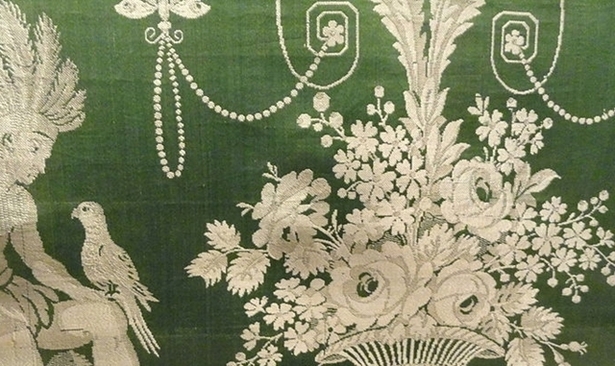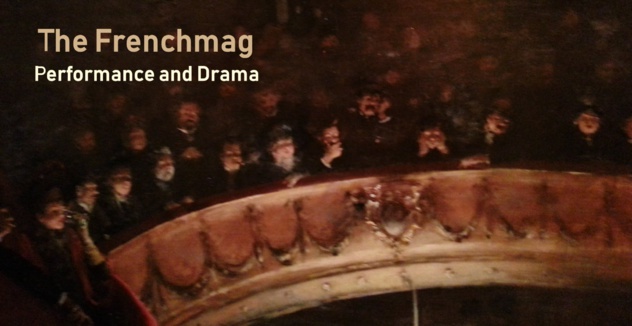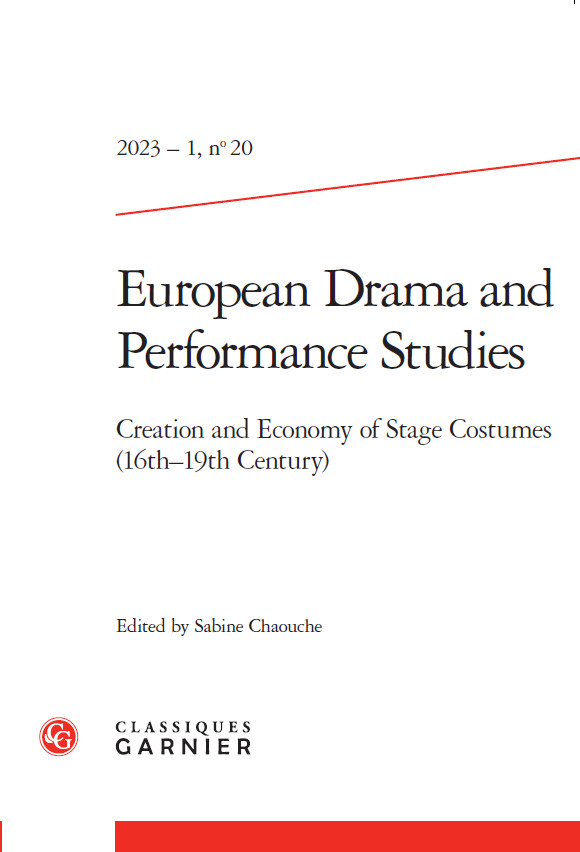
credit: Daderot
The Comédie-Française had a very particular status in Paris, which could be compared to the ‘marchandes de modes’ status: it had an intermediary position in the economical life cycle, halfway between fabrication (e.g. through fabrics, raw materials) and production (through final stage-productions), between buying from suppliers and selling to customers. The Comédie-Française had to deal with suppliers who could either offer a service or sell a product, sometimes both. Its business operations involved sources of supply and supply services, i.e. strong logistics within Paris.
In the meantime the Comédie-Française was itself a major source of supply for the Parisian audience in search of frivolity and entertainments. It stimulated commerce and consumerism, depended on fashions (e.g. performances, costumes, and scenery were adapted to demand). It was also influenced by the changes of and in the city, its citizens’ social habits and behaviour. The Comédie-Française had therefore a sort of rolling and moving business which was most generally in line with its customers’ aspirations or new trends.
Orders were constantly made to enable new stage-productions and revivals but also a smooth day-to-day running which related to the maintenance of the playhouse and its organisation.
Bills had different formats, depending on the supplier. Small orders were normally written on a piece of paper (in-quarto size). A few lines summarized the order. Fortunately, orders from big retailers were usually extremely detailed and very accurate. Each product was carefully described, in particular the date, the quantity required, the price per product, the sum and the total amount. A memoir would usually recapitulate all the orders made at the same time, but also, in some cases, over the previous months or year (as for instance bills relating to scenery or fabrics). Some suppliers had pre-printed invoices such as for instance Lobin:
LA POMME D’OR (THE GOLDEN APPLE)
Rue Tirechappe, Cul-de-Sac des Bourdonnois
LOBIN, cloth manufacturer, runs a shop of woollen
& other fabrics, at wholesale or retail, fair prices
PARIS.
Established merchants, and especially those who had big and luxury shops, used to give as much information as possible to their customers. They would mention the name of the shop, the address, their turnover, their trade (e.g. merchant) or their specific corporations (e.g. haberdasher, tailor, marchands de mode).
More interestingly, they would emphasize the extreme variety and diversity of the products which were available (French products, foreign products such as English fabrics; different types of fabrics: silk, linen, muslin, wool such as ras-de-castor, gauze, lace etc.). They would also enhance their goods by insisting on how huge and diverse their stocks, sets, matches and selections were (“very wide range”, “extremely considerable” were common expressions describing them).
The invoices suggested how magnificent and sumptuous the shops were, a cavern with many treasures that would certainly excite the curiosity of customers, bourgeois or rich aristocrats very fond of luxurious fabrics or peculiar objects (cf. Marie-Antoinette’s taste for small boxes and trinkets). Their slogan or more precisely their catch-phrase would highlight the wealth and novelty of the products in stock and the fact they were in line with fashion. Customers would be lured by so many offers and choices, and also by the chance to buy different goods in the same place. Some merchants, such as Lobin, prided themselves on selling at fair prices, i.e. on being competitive and offering the best deals on the market. Invoices were clearly part of a marketing strategy aiming to attract customers. It was also a sign that luxury shops would tend to mix as many products as possible, being therefore the forerunners of the general store or modern emporium. The invoice was therefore a locus for marketing since it included advertisement, as well as a form of business card.
Sabine Chaouche
In the meantime the Comédie-Française was itself a major source of supply for the Parisian audience in search of frivolity and entertainments. It stimulated commerce and consumerism, depended on fashions (e.g. performances, costumes, and scenery were adapted to demand). It was also influenced by the changes of and in the city, its citizens’ social habits and behaviour. The Comédie-Française had therefore a sort of rolling and moving business which was most generally in line with its customers’ aspirations or new trends.
Orders were constantly made to enable new stage-productions and revivals but also a smooth day-to-day running which related to the maintenance of the playhouse and its organisation.
Bills had different formats, depending on the supplier. Small orders were normally written on a piece of paper (in-quarto size). A few lines summarized the order. Fortunately, orders from big retailers were usually extremely detailed and very accurate. Each product was carefully described, in particular the date, the quantity required, the price per product, the sum and the total amount. A memoir would usually recapitulate all the orders made at the same time, but also, in some cases, over the previous months or year (as for instance bills relating to scenery or fabrics). Some suppliers had pre-printed invoices such as for instance Lobin:
LA POMME D’OR (THE GOLDEN APPLE)
Rue Tirechappe, Cul-de-Sac des Bourdonnois
LOBIN, cloth manufacturer, runs a shop of woollen
& other fabrics, at wholesale or retail, fair prices
PARIS.
Established merchants, and especially those who had big and luxury shops, used to give as much information as possible to their customers. They would mention the name of the shop, the address, their turnover, their trade (e.g. merchant) or their specific corporations (e.g. haberdasher, tailor, marchands de mode).
More interestingly, they would emphasize the extreme variety and diversity of the products which were available (French products, foreign products such as English fabrics; different types of fabrics: silk, linen, muslin, wool such as ras-de-castor, gauze, lace etc.). They would also enhance their goods by insisting on how huge and diverse their stocks, sets, matches and selections were (“very wide range”, “extremely considerable” were common expressions describing them).
The invoices suggested how magnificent and sumptuous the shops were, a cavern with many treasures that would certainly excite the curiosity of customers, bourgeois or rich aristocrats very fond of luxurious fabrics or peculiar objects (cf. Marie-Antoinette’s taste for small boxes and trinkets). Their slogan or more precisely their catch-phrase would highlight the wealth and novelty of the products in stock and the fact they were in line with fashion. Customers would be lured by so many offers and choices, and also by the chance to buy different goods in the same place. Some merchants, such as Lobin, prided themselves on selling at fair prices, i.e. on being competitive and offering the best deals on the market. Invoices were clearly part of a marketing strategy aiming to attract customers. It was also a sign that luxury shops would tend to mix as many products as possible, being therefore the forerunners of the general store or modern emporium. The invoice was therefore a locus for marketing since it included advertisement, as well as a form of business card.
Sabine Chaouche




